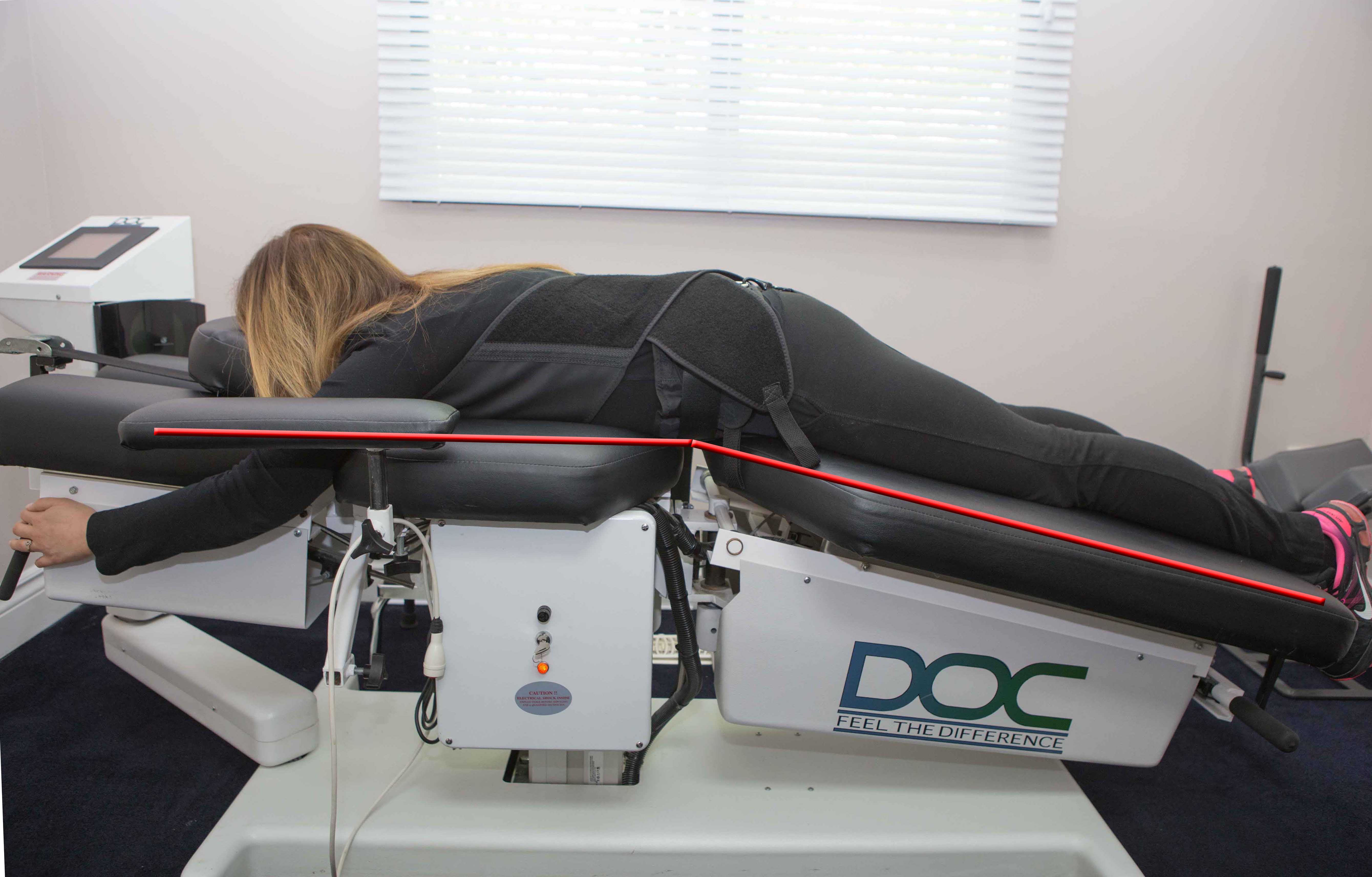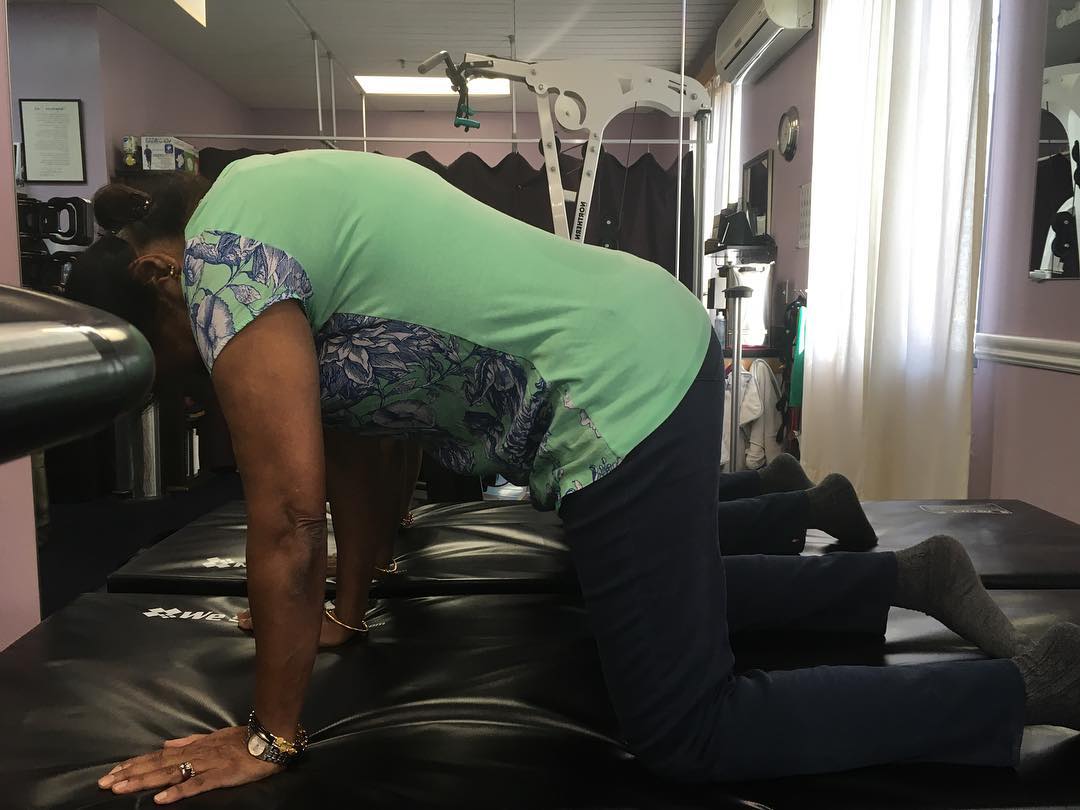This patient started attending our clinic complaining of lower back pain on November 12, 2018. She reported severe pain in the back in the morning with radiation down the leg since March of this year. Her MRI shows facet degeneration and severe spinal stenosis at L4-L5. There is degeneration at L5-S1 as well.
After only four sessions utilizing our advance unique therapy technique her pain level reduced from 7/10 to 3/10. Her Low Back Disability Questioner score also reduced from 34 to 20%. Her ROM has also increased. Below is the re-examination post four treatment session in 2 weeks.
Examination Date: 19/11/2018
Intermediate Exam
Chief Complaint
- Bilateral Lower Back
Occasional bilateral lower back pain. Ms. XXXXXX feels better since the start of the treatments. She considers this complaint as mild to moderate and rated the pain as a 3 on a scale of 0 to 10 with 10 being the worst. The pain is described as aching and dull and is radiating into the left calf and right calf. The pain is reduced by resting while bending and lifting aggravates the condition.
Oswestry Low Back Disability Index
The patient was asked to complete the Oswestry low back questionnaire. The disability score calculated was 20%. Their responses are as follows.
The pain comes and goes and is moderate. I do not normally change my way of washing or dressing even though it causes some pain. I can lift heavy weights but it gives extra pain. I have some pain with walking but it does not increase with distance. I can sit only in my favorite chair as long as I like. I have some pain on standing but it does not increase with time. I get pain in bed but it does not prevent me from sleeping well. My social life is normal and gives me no pain. I get some pain while traveling but none of my usual sorts of travel make it any worse. My pain fluctuates but overall is definitely getting better.
Physical Examination
Physical examination revealed an individual who was alert, cooperative and orientated.
The patient’s gait appeared normal. Minor’s sign was negative.
Sex: Female
Age: 69
Height: 157 cm
Weight: 60 kg
BMI: 24.3
Complexion: Normal
Size: Normal
Grip strength: Normal bilaterally.
Posture
There is no indication of a head tilt in the patient’s posture. Her shoulder level appeared even bilaterally. There is no evidence of a forward head carriage. Her ilium level appeared even bilaterally. Observation and inspection of the thoracic spine revealed a normal spine. Profile view of the lumbar spine revealed normal curvature. Romberg’s test was negative. Adam’s sign was negative. Left heel walk: WNL. Right heel walk: WNL. Left toe walk: WNL. Right toe walk: WNL. Trendelenberg test on the left was negative. Trendelenberg test on the right was negative.
Ranges of Motion
Lumbar Spine
Motion Degree Normal Pain Level
Flexion: 50 60 Mild
Extension: 23 25 Mild
Lateral Right: 25 25 Mild
Lateral Left: 20 25 Mild
Lumbar Spine Evaluation
Lumbar spine evaluation provided the following results:
Evaluation of the lumbar spinal region reveals tender areas in the lumbar region on both sides (grade 2) and erector spinae on both sides (grade 2). Palpation of the spine indicated discomfort and pain in the spinous process at: L4, L5 and S1 (grade 2). Evaluation of the lumbar spinal areas indicates that trigger points are present in the erector spinae bilaterally (moderate) and quadratus lumborum bilaterally (moderate). Straight leg raise was positive on the left. The patient also reported experiencing radiating pain during the test. Straight leg raise was positive on the right. The patient also reported experiencing radiating pain during the test. Braggard’s sign was negative bilaterally. Hoover test result was negative. Kemps was positive on the left. The patient reported localized low back pain during the test. Kemps was positive on the right. The patient reported localized low back pain during the test. Patrick-Fabere test was negative on the left and the right. Milgram’s test was negative. Valsalva’s test was positive with pain at L5. The following lumbar orthopedic tests were negative: hip circumduction bilaterally.
Diagnosis
M5416 Radiculopathy, lumbar region
Chronic , moderate traumatic joint and muscle dysfunction in the above region with associated symptoms of pain, ROM reduction and functional difficulties.
Management Plan
Some short term goals have been achieved. Long term goals continue to be so that Ms. XXXXXX reports over 80% pain reduction and demonstrates over 80% increase in ROM within 4 to 6 weeks. Functionally Ms. XXXXXX should also be able to perform most of her ADL’s within this period. Ms. XXXXXX is also to be discharged with a home exercise program when the above goals have been achieved. Continuation of treatments at this time is recommended since ROM and positive orthopedic test suggest residual impairments.
Myofascial Release 2x per week/duration of 1 month (to release muscular lesions)
Spinal Manipulation or chiropractic decompression 2x per week/duration of 1 month (to reduce pain, inflammation and spasm as well as increase range of motion)
Therapeutic Exercises 2x per week/duration of 1 month (to improve strength, flexibility, balance, range of motion, or endurance to one or more areas of the body)
Home Exercise Program 1x (for the patient to follow a sound home exercise program to increase flexibility, strength and endurance)
Physical modalities 2x per week/duration of 1 month (Modalities such as heat, cold, electrotherapy, ultrasound, laser, acupuncture and myofascial release are used to reduce pain and inflammation and increase range of motion. )
Today’s Treatments
Today’s treatment consisted of Simply Align Technique including Spinal decompression Pron, 7 degress of flexion 60 lbs and protocal 6 for 15 min. To reduced muscle spasm IFC was added. (core training,15times, given by NP supervised by PTA).
Cat and Camel exercise was also introduced for increase pain-free flexibility.
Proper use of heat or ice, sitting, standing, transferring, lifting, pushing and sleeping was explained to Ms. XXXXXX today.
Also Read
| Case Study: Acute Lumbar Radiculopathy (2) | Case Study: Subacute Lower Back Pain | Case Study: Chronic Lower Back Pain | Case Study: L5-S1 Disc Prolapse |
| Case Study: Lumbar Spinal Stenosis | Case Study: Right lateral disc protrusion at L5-S1 | Case Study: Antalgic Posture | Lumbar Spondylosis |
| Whiplash | Finding DBT Therapist |



